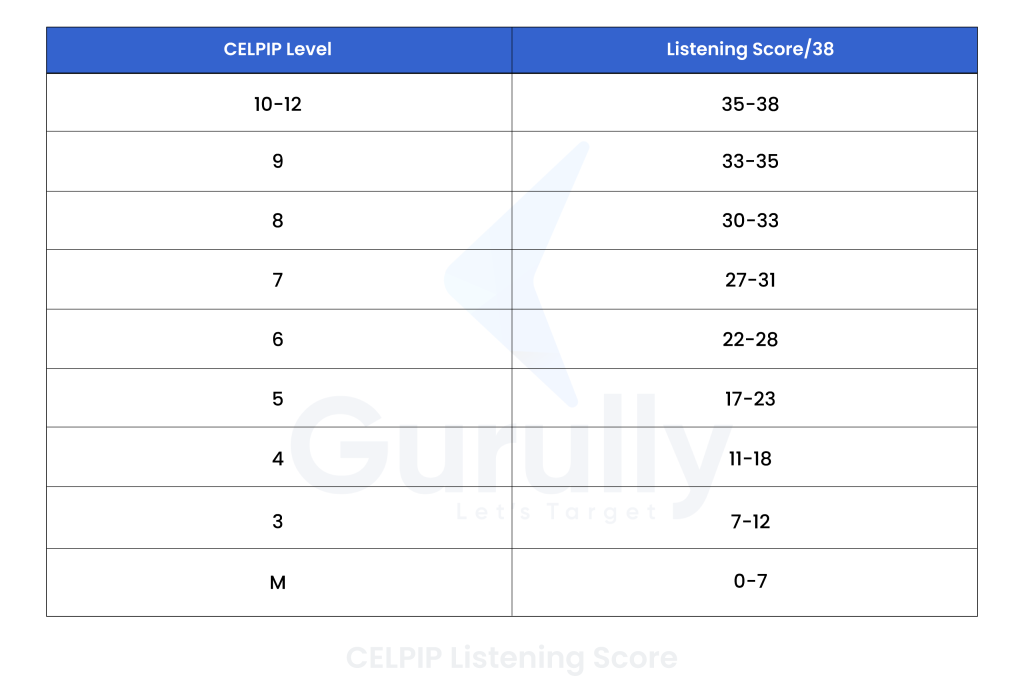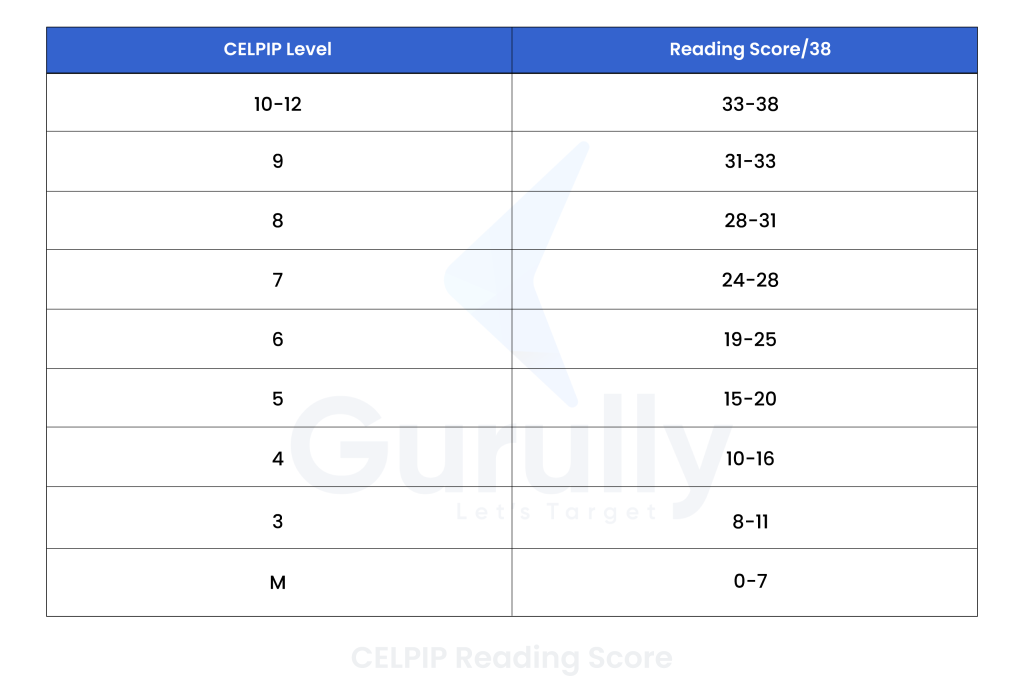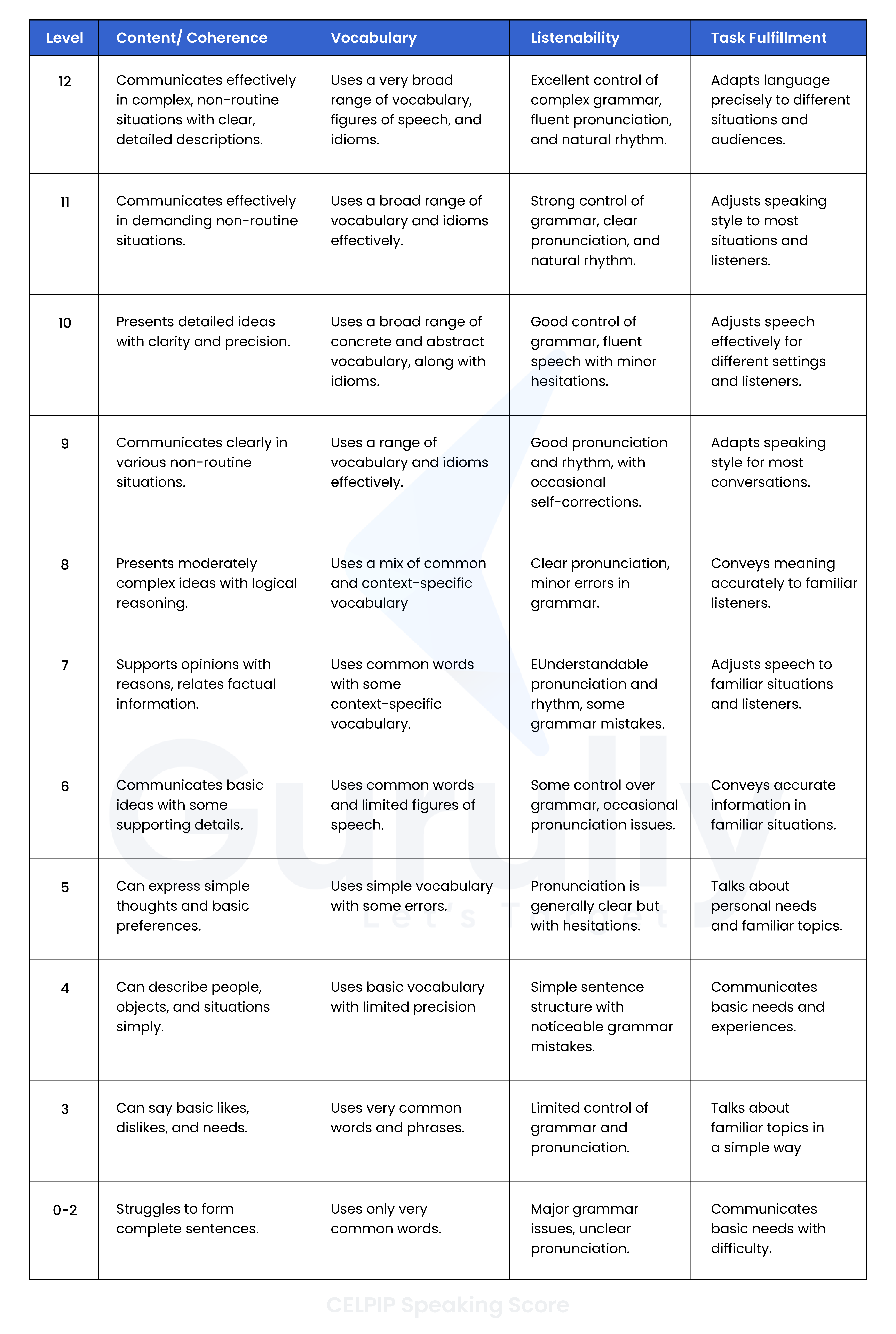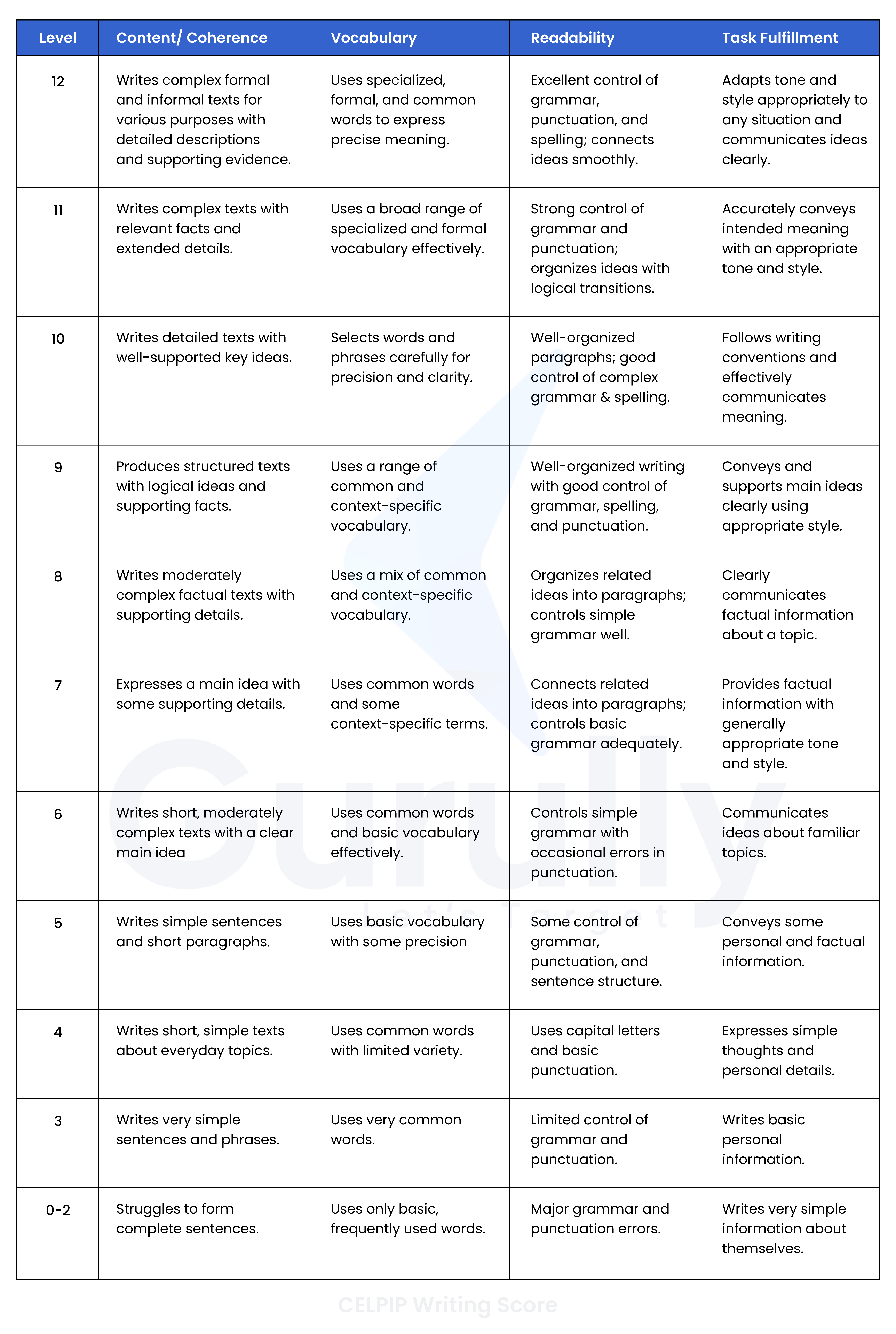Are you planning to take CELPIP test in 2025 and want to know what scores you need to achieve your goals? If YES, then you need to read this. The first step towards setting a clear goal is to understand the CELPIP score chart. Whether you’re aiming for Canadian immigration, professional certification, or personal improvement, knowing how the scoring system works will help you create a focused study plan.
Understand CELPIP Score Chart:
In CELPIP score chart, your English language proficiency is measured on a 12-point scale. It is primarily used for Canadian immigration, citizenship, and professional designation purposes.
| Test Level Descriptor | CELPIP Level | CLB Level |
| Advanced proficiency in community contexts and workplace | 12 | 12 |
| Advanced proficiency in community contexts and workplace | 11 | 11 |
| Highly effective proficiency in workplace and community contexts | 10 | 10 |
| Effective proficiency in workplace and community contexts | 9 | 9 |
| Good Proficiency in workplace & community context | 8 | 8 |
| Adequate proficiency in workplace and community contexts | 7 | 7 |
| Developing proficiency in workplace and community contexts | 6 | 6 |
| Acquiring proficiency in workplace and community contexts | 5 | 5 |
| Adequate proficiency for daily life activities | 4 | 4 |
| Some proficiency in limited contexts | 3 | 3 |
| Limited ability in contexts related to immediate needs | 2 | 1,2 |
| Insufficient information to assess | 1 | / |
Understand CLB Levels:
High CLB Levels:
- CLB 12 – This level depicts an advanced level of English, which means the person can communicate easily in complex professional and social situations. They can understand and produce the English language and engage in high-level discussions.
- CLB 11 – This level is Similar to CLB 12, but with slightly less fluency and control over English language structures. A person can still manage high-level workplace interactions and contribute meaningfully in discussions.
- CLB 10 – This level shows highly effective communication skills for handling professional and social interaction. The individual is capable of giving presentations, doing negotiations, and comprehending detailed documents effortlessly.
- CLB 9 – This level indicates an adequate level of proficiency where the person can work independently in the workplace and community. They are capable of writing clear reports, participating in meetings, and understanding detailed information without difficulty.
Intermediate Proficiency Levels
- CLB 8 – This level represents good English, sufficient for most workplace tasks and social interactions. The individual can communicate well in structured discussions and handle common professional writing.
- CLB 7 – This level is considered adequate for workplace and community interactions. The person can engage in conversations, understand instructions, and complete routine writing tasks but may struggle with complex or nuanced discussions.
- CLB 6 – This level shows a developing proficiency where individuals can participate in familiar workplace situations but may need detailed or abstract communication support.
Basic Proficiency Levels
- CLB 5 – In this level, the individual is acquiring English proficiency and can handle simple conversations in the workplace and community. They may struggle with more formal or specialized communication.
- CLB 4 – This level indicates adequate English for daily life but insufficient for most professional settings. The individual can understand and communicate simple ideas but may find complex conversations challenging.
- CLB 3 – This level shows some proficiency but within very limited contexts. The person can communicate basic needs but has difficulty understanding detailed or rapid speech.
Minimal Proficiency and No Assessment
- CLB 0,1,2 (M) – This level represents minimal English proficiency, meaning the person can understand and use only very basic words and phrases. There may not be enough information to assess their full ability.
- Not Administered – The individual did not take this part of the language assessment.
Scoring in CELPIP General vs. General LS
- CELPIP-General: Tests all four skills (Listening, Reading, Writing, Speaking).
- CELPIP-General LS: Tests only Listening and Speaking (used for Canadian citizenship applications).
How CELPIP Scores Are Evaluated
Listening & Reading:
All CELPIP reading & listening questions are in multiple choice or similar format. All the responses to these questions were marked on the basis of correct or incorrect answers. The questions that are left blank are marked as wrong. This scoring is done by computer.
Writing & Speaking:
Questions of writing and speaking components of CELPIP-General test are evaluated by qualified raters trained to apply consistent criteria. These criteria asses test takers performance bases on standard scoring matrix.
CELPIP Listening Score Chart:

CELPIP Reading score chart:

CELPIP Speaking Score Chart:

CELPIP Writing score chart:
Rating Procedure Of CELPIP
In this exam, the evaluation of the responses is assigned randomly to raters by an online system. The identity of test takers remains anonymous. To ensure fairness, each test is evaluated by multiple raters.
For the Speaking test, at least three raters assess the performance, while the Writing test is evaluated by at least four raters. These raters work independently and do not know the scores given by others.
Scoring Criteria
Raters assess performance based on specific criteria:
- Speaking: Content/Coherence, Vocabulary, Listenability, and Task Fulfillment
- Writing: Content/Coherence, Vocabulary, Readability, and Task Fulfillment
Ensuring Accuracy
Once the ratings are complete, they are checked for consistency. If there is a disagreement, an experienced benchmark rater reviews the test. These expert raters ensure fairness and do not see the previous scores. You can also use the CELPIP Score Calculator to estimate your potential results.
Final Score Calculation
The final Speaking and Writing scores are based on the ratings given by raters. These scores are then converted into CELPIP levels using a process designed by English language experts.
These experts analyze the skills needed at each level (e.g., CLB 8) and match test performance to the appropriate CELPIP level. This process ensures accurate and fair results.
Once you understand the CELPIP score chart, the next step is to focus on your exam preparation. To maximize your chances of success, practice with Gurully’s full-length mock tests. Our platform provides an authentic exam simulation, ensuring you experience the test environment as it will be on exam day. Additionally, you’ll receive instant scoring to identify areas of improvement.
Conclusion:
Understanding the CELPIP score chart is crucial for setting clear goals and developing a focused study plan for 2025. Whether you aim for Canadian immigration, professional certification, or personal growth, knowing how scores are evaluated will help you track your progress effectively. Start your preparation with Gurully’s CELPIP Practice Tests, where you’ll experience real-time exam simulation and instant scoring.
Also Read:
- PTE vs CELPIP vs IELTS : Which Is Best English Test For Canada PR
- 10 Sure-shot ways to Succeed in the CELPIP English Test









